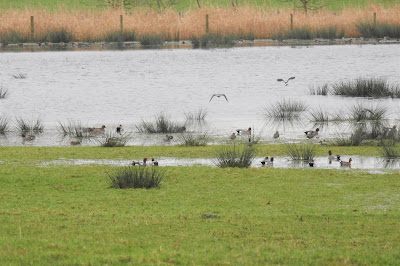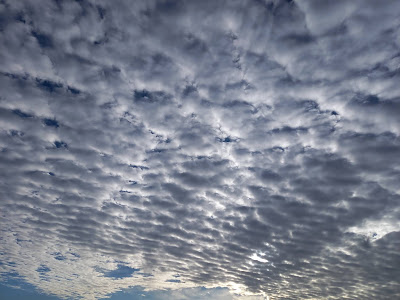At the end of last week, I was at one of my wintering bird survey sites in northwest Lancashire, and it was a quiet one. In fact, when I was at my second VP, I sent a text to Gail saying I'm in danger of falling asleep standing up, it's so quiet! There was more activity at my first VP, and I guess that's because I was at this VP from first light, and at this time of year the flurry of post-roost activity is short-lived.
It was a cold morning, with full cloud cover and a light south-easterly wind, but that didn't prevent nine Brown Hares from being active. You know what I think about Brown Hares, gorgeous creatures. Pink-footed Geese were very thin on the ground, and the only post-roost movement I had were skeins of 24 and 26.
Just two species of raptor, a Buzzard and a male Kestrel, and a Snipe over was the only wader species of wader that I recorded. There were still quite a few wintering thrushes about, and I had four Song Thrushes, 40 Redwings, nine Blackbirds and 61 Fieldfares.
I did have one good bird, in the form of a female Bullfinch. Bullfinches are quite scarce in this area, so it was good to both see and hear, and it was a first record for me for the site.
Last weekend I managed to banish those feeding station blues, and Alice, John and I managed a ringing session at the feeding station. We went on Saturday, as the forecast for Sunday was for fog, and if it was foggy, we wouldn't have been able to have a look on the wetland. Guess what? Saturday turned out to be foggy, and it was a bit of a 'pea souper', so it was pointless even attempting to have a look on the wetland, as it was a case of "what wetland"?
We managed to ring 36 birds as follows (recaptures in brackets):
Blue Tit - 15 (6)
Great Tit - 5
Chaffinch - 5
Robin - 1
Dunnock - 3
Tree Sparrow - 7
Nuthatch - (1)
Coal Tit - (2)
It was good to ring the Tree Sparrows, as this was the main reason for setting the feeding station up. It also gives us the opportunity to gather more data on this red-listed species, as there is a healthy breeding population at the farm that we monitor in nest boxes, so to catch them in the winter, it completes the circle.
I'm working tomorrow, but this time I am completing a survey fairly close to home, so at least I should be finished by lunchtime. I am expecting it to be fairly quiet, but that's the beauty of the natural world, you just never know!
It just remains for me to wish you a merry, whatever it is you celebrate as part of the winter festivities, and here's to a happy, healthy and nature filled new year!














